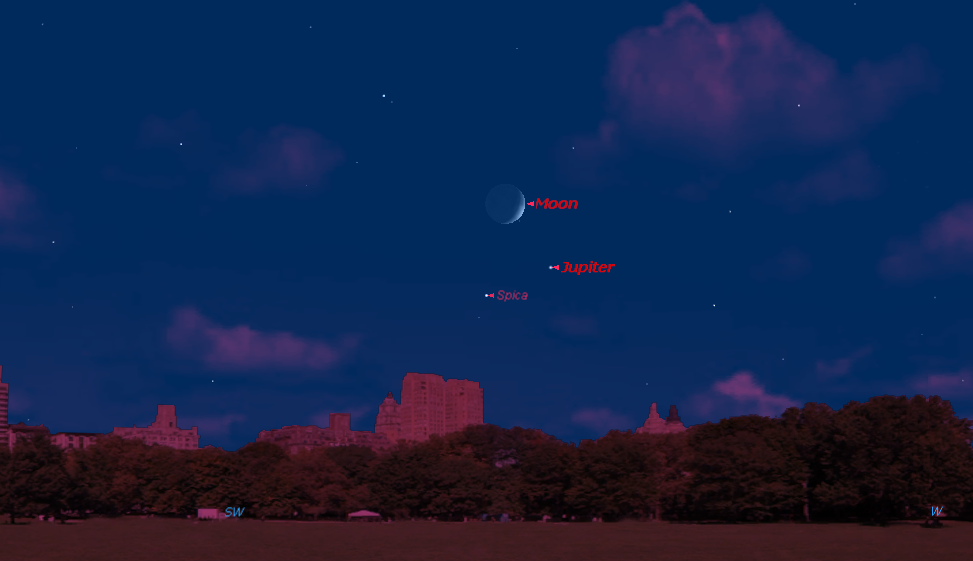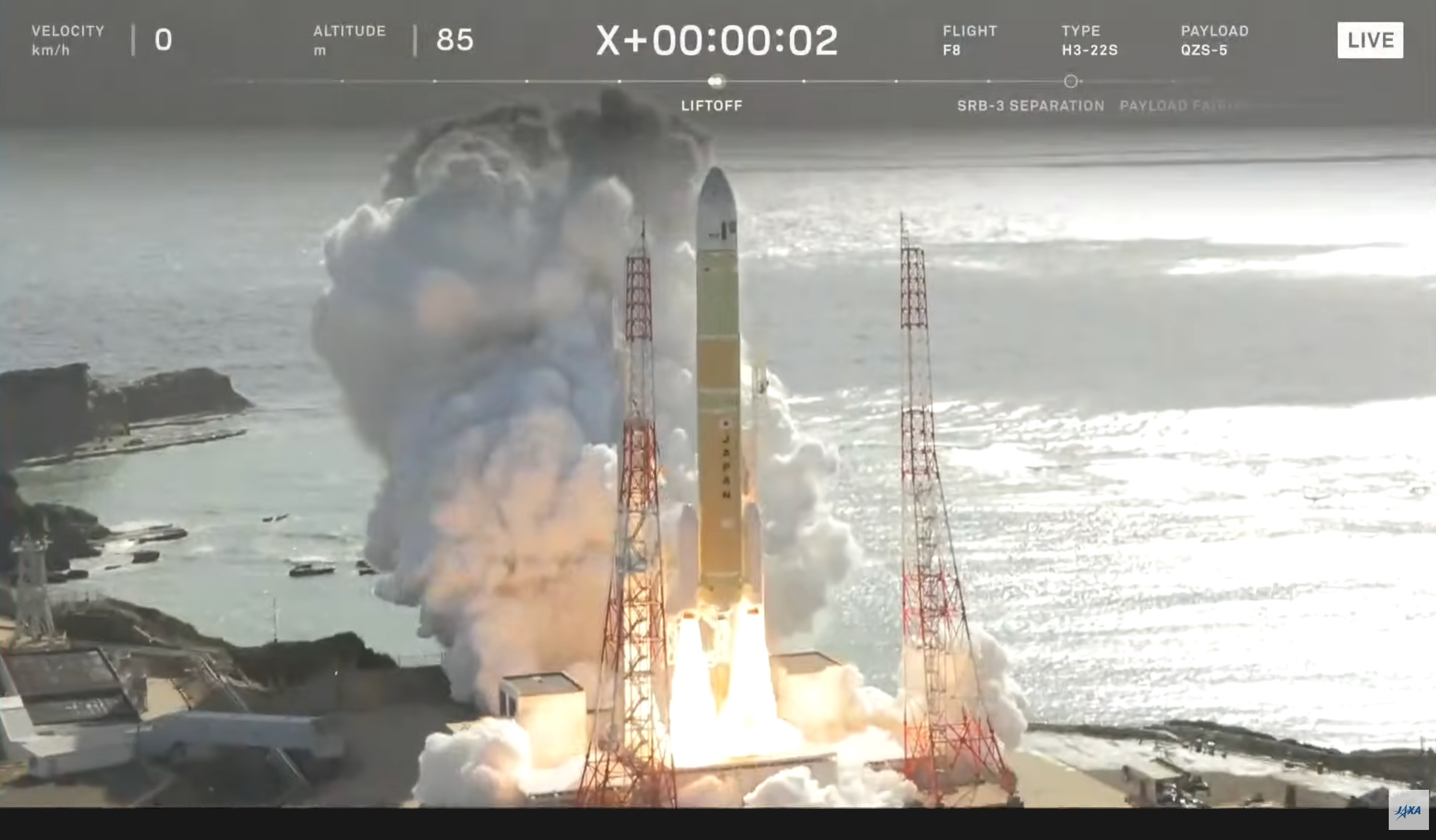Post-Eclipse, Moon Encounters Another Star (Plus Jupiter) Friday Evening

On Monday, people across North America turned their attention skyward to watch the moon have a spectacular encounter with the sun, leading to the spectacle of the Great American Solar Eclipse. And on Friday evening, the moon will have another — admittedly far less exciting, but still interesting — encounter with a bright star, along with a bright planet.
The planet in question is Jupiter, which has itself been lowering in the west-southwest at dusk during July and August. In early August, the planet was setting about an hour after the sky became fully dark, but now, as August is coming to a close, Jupiter is setting right around the end of evening twilight. The gas giant has been moving eastward against the stars of Virgo and toward the bluish star Spica; the gap between them was as great as 12 degrees on July 1 but will have shrunk down to 4 degrees by Aug. 31.
And while all this is taking place, on Friday evening, a beautiful crescent moon will be sneaking into view from the west. Looking toward the west-southwest part of the sky about 45 minutes after sundown, you will see this celestial trio roughly forming an isosceles triangle tilted slightly to the left, with Spica and Jupiter forming the base and the moon hovering above both of them at what could be called the vertex. Jupiter shines at magnitude 2.7, or a dozen times brighter than Spica. Indeed, initially you might need binoculars to pick out Spica, until the background twilight sky finally darkens sufficiently for you to see the star with your unaided eyes.
The farther south you are, the higher all three objects will appear above the twilight horizon and the better your view will be. The moon, of course, will rapidly shift out of the sector of the sky occupied by Jupiter and Spica after Friday evening.
The giant planet will pass 3 degrees north of Spica on Sept. 5, marking their third and final conjunction of a triple conjunction series that has been running since early this year.
Jupiter should continue to be visible to the naked eye on most clear evenings, at least for the first part of the month. Look for the planet very low in the west-southwest a half-hour after sunset until it finally disappears into the sunset glow during late September.
Joe Rao serves as an instructor and guest lecturer at New York's Hayden Planetarium. He writes about astronomy for Natural History magazine, the Farmers' Almanac and other publications, and he is also an on-camera meteorologist for Fios1 News in Rye Brook, New York. Follow us @Spacedotcom, Facebook and Google+. Original article on Space.com.
Breaking space news, the latest updates on rocket launches, skywatching events and more!

Joe Rao is Space.com's skywatching columnist, as well as a veteran meteorologist and eclipse chaser who also serves as an instructor and guest lecturer at New York's Hayden Planetarium. He writes about astronomy for Natural History magazine, Sky & Telescope and other publications. Joe is an 8-time Emmy-nominated meteorologist who served the Putnam Valley region of New York for over 21 years. You can find him on Twitter and YouTube tracking lunar and solar eclipses, meteor showers and more. To find out Joe's latest project, visit him on Twitter.
